VOL- 8 ; ISSUE 4 - PUNE RESEARCH SCHOLAR (ISSN 2455-314X) JIF 3.14
8.4 SCHOLAR
Area of Article : ALL
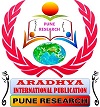
VOL- 8 ; ISSUE 4 - PUNE RESEARCH SCHOLAR (ISSN 2455-314X) JIF 3.14
8.4 SCHOLAR

VOL- 8 ; ISSUE 4 - PUNE RESEARCH SCHOLAR (ISSN 2455-314X) JIF 3.14
8.4.1 SCHOLAR
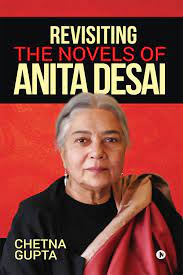
Anitha Desai was born in India and her novels are focused on the personal struggle of the middle class woman in the society by a traditional bound culture. She values the new possibilities for indo-English writers to with stand the inspiration among the upcoming young writers. Anitha Desai is an Indian novelist, notable for her studies Indian life and portrayal of female characters in her writings. Desai novels mainly focuses on the personal struggle Anglicized, middle class women in contemporary Indian as the attempt to overcome the social limitations bound by culture. She explains the essentiality of familiar bonds and addressed such themes as Gee man anti-sentimentalism. She not only ushered in new possibilities for Indo-English writers, withstand to be an inspiration for upcoming young writers.
VOL- 8 ; ISSUE 4 - PUNE RESEARCH SCHOLAR (ISSN 2455-314X) JIF 3.14
8.4.2 SCHOLAR

Rapid urbanization in India in recent decades has a resulted in city overpopulation and the rise of slums. Slums are home to a significant portion of the population in Aurangabad, one of India's Industrial cities. Several attempts have been made to implement slum policies that address the housing and communal needs of slum residents while simultaneously achieving the greater goal of urban development. They are particularly vulnerable to climatic change disasters and other environmental hazards due to their location and shaky infrastructure. While there are several strategies for enhancing infrastructure, ranging from that in situ restoration to transfer to a formal settlement, little study has been conducted on comment livability, especially in comparison to various options. Since most acceptability work has concentrated on formal settlements, there is an information gap in the understanding of how livability perceptions differ in developing countries like India, where a large segment of the population resides in informal settlements like slums. This paper continues by claiming that previous policies ignored the majority of slum residents' rights while benefiting other parties such as real estate developers.
Key Words: Slums, Urban, City, Slum Policies
VOL- 8 ; ISSUE 4 - PUNE RESEARCH SCHOLAR (ISSN 2455-314X) JIF 3.14
8.4.3 SCHOLAR
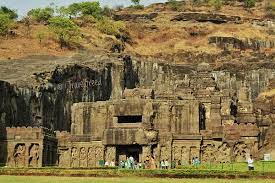
There
are many large and small pilgrimage centers in India with a lot of potential in
the field of tourism. These pilgrimage towns are always flourished with the
religious, cultural, and traditional activities around the tangible heritage.
The communities and these allied activities have a connect which generates the
source of economy for the town. Taking into consideration the heritage and
tourism linked urban development, the comprehensive and holistic approach in
such small pilgrimage towns is unaddressed and unacknowledged. The research
will put forward the study of one such town – Paithan, Maharashtra, India. The
town of Paithan is graced with rich and diverse natural, historic, social, and
cultural heritage. The inheritance of culture and the communal diversity of the
town is responsible for the various architectural styles. This ‘Land of Saints’
makes it more culturally flourished which attracts the floating population.
This sacred town has experienced the metamorphosis through many years which has
generated a cover of secularism around it. To maintain its significant glory
and grandeur, this research proposal will attempt to achieve the comprehensive
and holistic development through the study of ‘evolution and potential’ and
suggestions and recommendations for the present scenario.
Key words – Pilgrimage, heritage, tourism, communities,
comprehensive development
VOL- 8 ; ISSUE 4 - PUNE RESEARCH SCHOLAR (ISSN 2455-314X) JIF 3.14
8.4.4 SCHOLAR
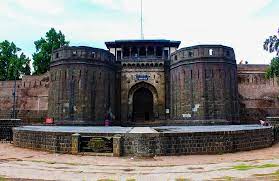
Public
spaces are influenced by the form and functions of cities and the daily
interactions and activities that take place at the community level. These are
linked to ideas of universal access, the common ground, and shared amenities.
It also includes the social, economic, and environmental viability of
communities. One such important public realm includes market spaces. Markets
can be studied since the Greek Agora’s till today. It also sustains
neighbourhood for various needs of life. These places are open air living
spaces which contribute to city’s economic growth and are spaces for social and
cultural public interactions. Market spaces are recreational spaces where
people are found gathering, eating, sitting, watching and watched by others,
these can be complex area or a street space. Market Streets can be traced in
city of Pune since a long period in history. Markets that are still surviving
from histories like from the period of Peshwa can also be seen here. And even
the recently developing markets can be observed here like markets spaces in
Koregaon Park, FC Road, MJ road, etc.
Keywords: Lived spaces, spatial triad, futuristic
approach, public realm
VOL- 8 ; ISSUE 4 - PUNE RESEARCH SCHOLAR (ISSN 2455-314X) JIF 3.14
8.4.5 SCHOLAR
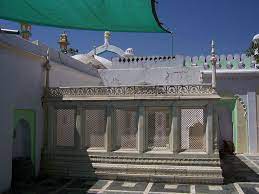
A
tourist's primary motivation when engaging in cultural tourism is to learn,
discover, experience, and consume its local attractions and goods. Cultural
heritage consists of tangible (movable and immovable), intangible, and natural
heritage that has been shaped over time by different generations. The local cultural
legacy must be preserved and revived in the rapidly changing urban context. The
historic town Rauza-e-Khuldabad known as “Valley of Saints” and “Adobe of
eternity” determines its rich cultural heritage presence. Place consists of
historical, religious, and natural tourist attractions with rich cultural
background of two completely different communities. It is a historically
significant gold mine that has not yet been fully exploited. This research
paper tries to explore Rauza-e-Khuldabad town with its tangible and intangible
accepts with respect to cultural tourism and concludes with the significance of
protecting, conserving, and promoting cultural heritage for the development of
the town in an integrated manner.
VOL- 8 ; ISSUE 4 - PUNE RESEARCH SCHOLAR (ISSN 2455-314X) JIF 3.14
8.4.6 SCHOLAR

Magical
realism, magic realism, or marvelous realism is a style of fiction that paints
a realistic view of the modern world while also adding magical elements. It is
sometimes called fabulism, in reference to the conventions of fables, myths,
and allegory. It is considered a subgenre of fantasy. The borders between
magical realism and fantasy are mushy. Magical realism as a genre can be
thought of as a subset of fantasy, but in true fantasy novels, the larger outer
world does not look like ours, we have been departed to another world
altogether. But in a magical realist story, on the other hand, we are in a
mundane, familiar place that is inhabited or imbued with something not of this
world. The novel, “One Night at the Call Centre”, is set in a place, which is
very common and familiar to all readers but the writer, all of sudden,
introduces a magical element in the plot with a definite purpose. This article
aims at identifying the magical element and the purpose of introducing the
element.
Key Words: Realism, Supernatural Power, Fiction, Fantasy, Myth.
VOL- 8 ; ISSUE 4 - PUNE RESEARCH SCHOLAR (ISSN 2455-314X) JIF 3.14
8.4.7 SCHOLAR
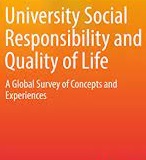
This
paper discusses the concept of “University Social Responsibility” (USR) which
is an extension of CSR in context of Indian universities vis-à-vis the
universities around the globe. University Social Responsibility (USR) is
becoming increasingly important in today’s world, and there are several reasons
why universities should focus on social responsibility. The concept of
University Social Responsibility (USR) refers to the responsibility of
universities to contribute to the betterment of society and the environment
through their research, teaching, and community engagement activities. This
article explores the importance of USR and its growing recognition among higher
education institutions around the world. USR is connected to the concept of
Corporate Social Responsibility (CSR) but focuses specifically on universities.
USR activities include providing access to education, conducting research that
addresses societal challenges, supporting community outreach programs,
promoting sustainable practices, and fostering entrepreneurship and innovation.
The article also discusses the importance of collaboration between USR and CSR
in today’s rapidly changing and increasingly interdependent world. Lastly, the
article examines the ways in which American universities have demonstrated
social responsibility through sustainability initiatives, community engagement,
diversity and inclusion, and research and innovation.
VOL- 8 ; ISSUE 4 - PUNE RESEARCH SCHOLAR (ISSN 2455-314X) JIF 3.14
8.4.1 स्कॉलर
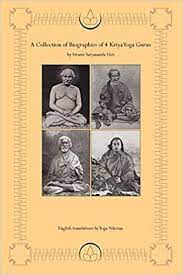
सर्वव्यापक पूर्ण ईश्वरी तत्वाला अनुसरून त्यात समरस होण्याकरिता जे चिंतन, मनन आणि जो बोध अंगिकारला जातो, तीच खरी प्रार्थना होय. प्रार्थना शब्द 'प्र' अधिक 'अर्थ' या दोन शब्दांनी बनलेला आहे, याचाच अर्थ होतो पूर्ण तल्लीनतेने निवेदन करणे. दुसऱ्या शब्दात प्रार्थनेचे तात्पर्य ईश्वराला, गुरूला, किंवा ईष्ट च्या प्रति , एखाद्या वस्तूबद्दल केलेली तीव्र व्याकूळ उत्कंठेने केलेले निवेदन होय. प्रत्येकाचे कार्य हे त्याची कृत प्रार्थनाच होय. प्रार्थनेची वृत्ति वाढली की, तितक्याच प्रमाणात कार्यही प्रत्ययाने वाढले असे दृष्टीस येत असते. प्रार्थना म्हणजे कार्यशक्ती, प्रार्थनेला सक्रियतेची व कार्याला प्रार्थनेची तेवढीच आवश्यकता आहे. या दृष्टीने स्वधर्म- सेवेच्या खऱ्या मर्मांची जाणीव व्हावी, धर्माच्या समष्टि भावाचे पुनरुज्जीवन व्हावे, निरुद्ध मर्मतत्व प्रस्थापित व्हावे हाच सामुदायिक प्रार्थनेचा मुख्य हेतू. आजच्या परिस्थितीतील भिन्न संप्रदाय, समाज व पंथ यांचे वैयक्तिक व कार्यांतर्गत मतभेद एकाधिष्ठांती तरी लीन व्हावेत व त्यांतील ऐक्यातून जनसेवेचा मार्ग मोकळा होवून सर्वांचे हित साधल्यास प्रार्थना सफल झाल्याचे स्वामीजी मानतात.